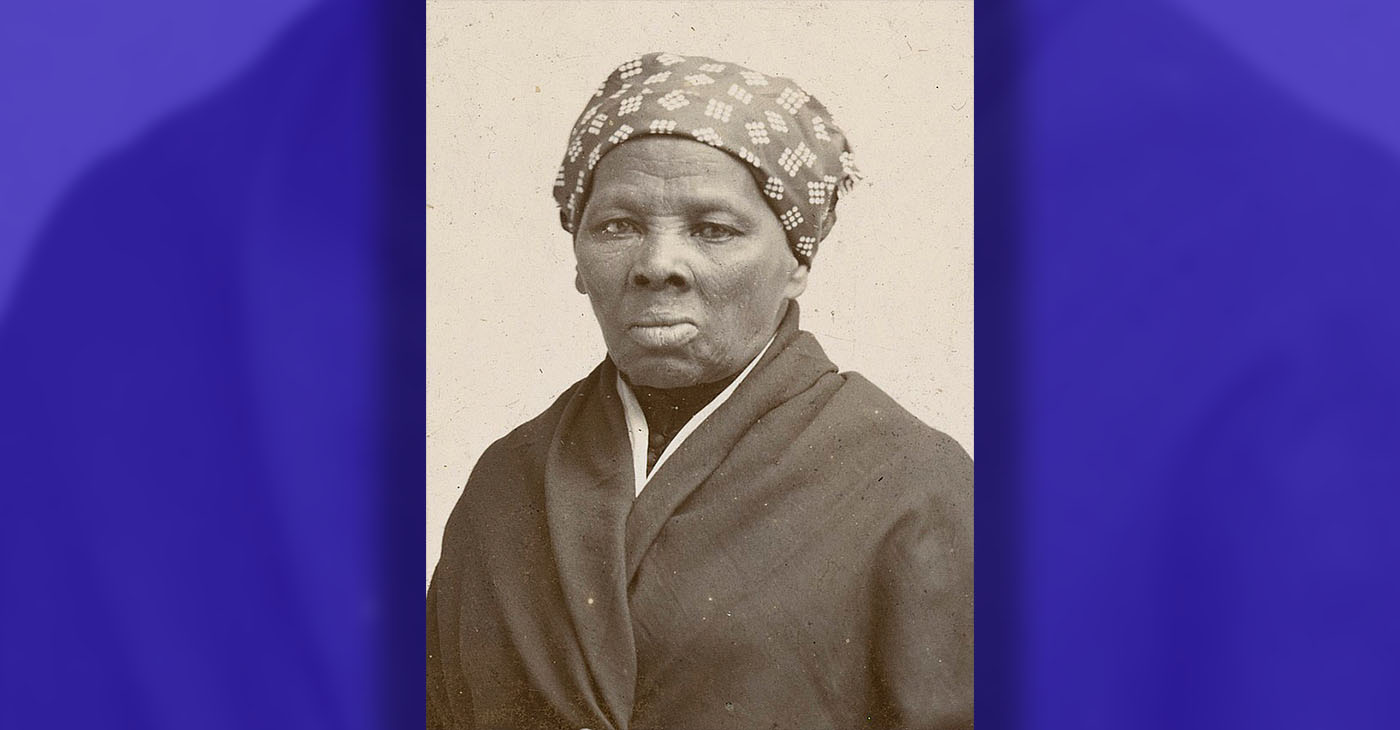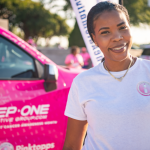#NNPA BlackPress
AUTO REVIEW: 2019 Toyota RAV4
NNPA NEWSWIRE — Not only was the RAV4 the first crossover, it is now the best-selling non-pickup truck in the country. In 2017, Toyota sold 408,000 RAV4s. What they’re trying to do with the new RAV4 is make it an all-round vehicle that can handle urban, suburban and the great outdoors driving.
By Frank S. Washington, AboutThatCar.com, NNPA Newswire Contributor
CARMEL, Calif., — It was 22 years ago that Toyota’s RAV4 first hit these shores. Now comes the fifth generation of the compact sport utility. It was the first such vehicle and it created the market we now know as crossover utility vehicles because if its uni-body construction.
Not only was the RAV4 the first crossover, it is now the best-selling non-pickup truck in the country. In 2017, Toyota sold 408,000 RAV4s. What they’re trying to do with the new RAV4 is make it an all-round vehicle that can handle urban, suburban and the great outdoors driving.
Another way of looking at it is that they want the 2019 RAV4 to be more utility like rather than car like.
To make the 2019 RAV4 look tougher, designers have picked up some design cues from Toyota’s pickup trucks, especially the Tacoma. The front end and grille design was meant to give it an athletic look.
Black cladding around the wheel arches appeared to lift the tires into a higher position much like a pickup truck. The lifted-up body was supposed to make the 2019 RAV4 look more capable. That was the idea.
We were in a convenience store getting our lotto on the drive and an older RAV4 parked next to our test vehicle. The difference was visible immediately. Our RAV4 had a higher hood and a more muscular face. It was just huskier.
Ground clearance was upped by more than a half inch over the model that it replaced. Even though it was higher Toyota said the step-in height remained comfortable. It was easy to get into and out of and the new RAV4 was comfortable.
The front seats were restful; there was plenty of lumbar support. Sight lines were really good especially since Toyota lowered the window belt line, dropped the sideview mirrors farther down on the doors, lowered the dash and added a small triangular window were the side view mirror housing would have been.
The new RAV4’s TNG-K global platform made body rigidity 57 percent stronger. They said the front strut and rear multi-link suspensions enhanced agility. That’s hard to argue with since we did several tight U-turns on the two lane parts of the Pacific Coast Highway near the iconic Bixby Bridge to take photos. It is not a place you want to back up to complete a U-turn.
The new platform was supposed to make the ride smoother and quieter. Indeed, the new RAV4 rode like a typical Toyota. It was smooth and quiet. However, from time to time it did seem like the engine ran like a four-banger of old: a little rough and a little loud. Engineers would do well to add a little more soundproofing to the fire wall and perhaps floorboard.
The global platform allowed engineers to place the powertrain lower in the engine bay and thus, lowered the center of gravity. Of course, high strength steel helped to reduced weight; a new saddle style fuel tank distributed the weight of the fuel evenly sized to side. The previous model had the entire fuel tank on one side of what is now the old RAV4.
Toyota has always been conservative with its engine technology in terms of horsepower. But Toyota power-plants have always been highly reliable and quiet, for the most part. In fact, the Toyota brand was built on the quietness and reliability of its engines.
The 2019 RAV4 gas model, which goes on sale in December, will be powered by a 2.5-liter four-cylinder engine mated to an eight-speed automatic transmission. It made 203 horsepower.
The hybrid goes on sale in March and it will be powered by a similar 2.5 liter four cylinder engine but in total it will be tuned for 219 horsepower. It will use an electric CVT and a nickel metal-hydride battery provides electric power. It will have an EPA rating of 41 mpg in the city, 37 mpg on the highway and 39 mpg combined.
Mileage for the gasoline engine depends on whether the trim line is all wheel drive or front wheel drive. For the Adventure grade AWD it is 24 mpg in the city, 32 mpg on the highway and 27 mpg combine. For the XLE FWD it is 27 mpg in the city, 34 mpg on the highway and 29 mpg combined.
The gas model has five grades: LE, XLE, XLE Premium, Adventure and Limited. The hybrid gets four grades: LE HV, XLE HV, XSE HV and Limited HV. All models are available in either front-wheel or all-wheel-drive
The 2019 RAV4 has a new all-wheel-drive system on the gasoline and hybrid models. On the gas models it can send up to 50 percent of its torque to the rear wheels. On the hybrid the system can send up to 80 percent of its torque to the rear wheels.
What’s more, this AWD system has torque vectoring, the ability to send torque from side-to-side. When all-wheel-drive is not needed, say on long dry highway drives, the rear axle driveshaft’s rotation can be stopped. It reduces energy loss and improves fuel efficiency.
Standard on all wheel drive equipped RAV4 is multi drive modes. Toyota said the modes maximize traction in mud, sand, rocks, dirt and snow. The display screen will show torque allocation and slip control.
For on road and off-road performance, the 2019 RAV4 has hill start assist, trailer sway control and downhill assist control. Depending on trim and powertrain, the new RAV4 can tow up to 3,500 lbs.
On the RAV4 Hybrid models, the AWD system employed a separate rear mounted electric motor to power the rear wheels when needed. It increases total torque to the rear wheels by 30 percent compared to the previous system.
We tried out the system on a moderate off-road course set up here. The RAV4 did well. We selected trail mode and the RAV4 climbed through soft dry road beds with a bit of slippage but nothing serious, it traversed close-set rises lifting the rear right wheel off the ground and hill descent is always impressive to me. More so was that I discovered hill descent worked in reverse as well.
The 2019 Toyota RAV4 has what is called a Predictive Efficient Drive system that reads the road and learns driver patterns to optimize hybrid charging.
I don’t know about learning from driver patterns, but the vehicle climbed over hills and went through mountain passes relatively easy.
Driving all around this area, in hybrids and gas-powered models, we found both responsive, they were relatively quiet, and handling was good, so was braking.
The instrument panel was a horizontal layout. It was minimalist and the floating infotainment navigation screen dominated. There were not a lot of buttons, switches or dials and there were soft touch points on the dash and the doors.
The passenger compartment had an open and airy feeling. And it would have been a more airy feel had we opened the screen covering the panoramic roof.
The front seats were supportive. The back seats looked like they could hold two adults comfortably, I didn’t get back there. The center console was about 1.5 inches wider and it was a bit higher than in the old model, matching the height of the door armrests. I didn’t notice and that was a good thing, armrests, center consoles or anything else should not distract the driver from driving.
There were heated front seats, the electric parking brake was standard, there was an optional wireless charger and the 2019 RAV4 had embedded storage trays under the dash to hold mobile phones and other travel stuff that were illuminated at night by a blue light.
The rear doors were bigger for easier access, the cargo area had a bit more room, when folded the rear seats formed an almost flat floor, headroom on the new model increased by almost 2-inches and the deck board was reversible. Flip it over and you get a plastic surface for wet or dirty objects or both.
The new RAV4 has three audio systems to choose from. The premium option has 11 speakers and 800 watts. No matter which one you chose they all have Apple CarPlay, WiFi Connect, Amazon Alexa and Google Assistant.
Toyota has been pushing its safety technology of late and the 2019 RAV4 is no different. It has the next generation of Toyota Safety Sense or TSS 2.0. That’s a pre-collision system with pedestrian detection, full-speed range dynamic radar cruise control, lane departure alert with steering assist, automatic high beams, lane tracing assist and road sign assist.
Base prices start at $25,500 for the LE FWD to $34,900 for the Limited AWD on the gasoline models. The hybrid starts at $27,700 and tops out at $35,700. A $1,045 freight charge is added to all prices and there are 13 different models.
An initial impression is that the new 2019 Toyota RAV4 is a worthy successor to the old model.
Frank S. Washington is editor of AboutThatCar.com
#NNPA BlackPress
Harriet Tubman Scrubbed; DEI Dismantled
A photograph of Harriet Tubman has been removed from a National Park Service webpage about the Underground Railroad.

By Stacy M. Brown
BlackPressUSA.com Senior National Correspondent
A photograph of Harriet Tubman has been removed from a National Park Service webpage about the Underground Railroad. Previously, the page opened with a photo of Tubman and a description that acknowledged slavery and the efforts of enslaved African Americans to escape bondage. That language is now gone. In its place are images of postage stamps and a reworded introduction that refers to the Underground Railroad as “one of the most significant expressions of the American civil rights movement” that “bridged the divides of race.” The updated version does not mention slavery. The change follows an executive order signed by President Donald Trump last month directing the Smithsonian Institution to eliminate “divisive narratives.” A review by The Washington Post found that since Trump’s return to office, dozens of webpages across the National Park Service have been edited to soften or eliminate references to slavery, racial injustice, and the historical struggles of African Americans.
On the website for the Stone National Historic Site in Maryland, mentions of Declaration of Independence signer Thomas Stone owning enslaved people were removed. Elsewhere, references to “enslaved African Americans” were changed to “enslaved workers.” A page exploring Benjamin Franklin’s views on slavery and his slave ownership was taken offline. The Defense Department also removed several webpages related to diversity and minority contributions to the U.S. military, including a tribute to Jackie Robinson’s Army service and content honoring the Tuskegee Airmen, the Navajo Code Talkers, and the Marines at Iwo Jima. Officials later said some content would be republished after public outcry. Nearly 400 books were removed from the library at the U.S. Naval Academy. The list includes Maya Angelou’s I Know Why the Caged Bird Sings, Memorializing the Holocaust, Half American, and Pursuing Trayvon Martin. Officials cited Defense Secretary Pete Hegseth’s directive to eliminate books that promote diversity, equity, and inclusion.
Private companies contracting with the federal government have begun rolling back language diversity and initiatives in response to federal pressure. UnitedHealth Group removed DEI language from its website. Goldman Sachs dropped its diversity requirement for companies it takes public and revised annual filings to reflect “developments in the law.” Bank of America replaced the term “diversity” with “talent” and “opportunity.” Deloitte instructed U.S.-based employees working with federal clients to remove pronouns from email signatures. Coca-Cola, PepsiCo, Disney, Paramount, JPMorgan Chase, Victoria’s Secret, and others have renamed or eliminated DEI programs. Some, like Paramount, cited the need to comply with Trump’s executive orders.
Target has faced financial and reputational fallout following its reversal of DEI commitments. The company has lost over $12.4 billion in revenue and faces multiple lawsuits related to its shifting policies. Rev. Jamal Bryant launched a national “Target Fast,” urging community mobilization. Separately, the NAACP and the National Newspaper Publishers Association (NNPA) initiated public education and selective buying campaigns to increase pressure on the retail giant.
“Black consumers helped build Target into a retail giant, and now they are making their voices heard,” said Dr. Benjamin F. Chavis Jr., president and CEO of the NNPA. “If corporations believe they can roll back diversity commitments without consequence, they are mistaken.”
#NNPA BlackPress
What Parents Think about Childcare Right Now
BLACKPRESSUSA NEWSWIRE — Children’s earliest years are a critical period when the foundation is built for lifelong physical health and emotional well-being

By: RAPID, Stanford Center on Early Childhood
The RAPID Survey Project, based in the Stanford Center on Early Childhood, is a program of ongoing national and place-based surveys designed to gather essential information on the needs, health-promoting behaviors, and well-being of young children and their caregivers. Our objective is to make timely and actionable data on the experiences of parents, caregivers, and young children available in an ongoing manner to support parent- and data-informed decision-making. Children’s earliest years are a critical period when the foundation is built for lifelong physical health and emotional well-being. Research shows that consistent, responsive caregiving is conducive to healthy development during these early years. We asked parents of infants and toddlers (birth to age 3) to tell us about their childcare experiences and preferences. Using responses from parents of infants or toddlers who participated in national RAPID household surveys in January 2024 and November 2024, we aim to understand the types of childcare that families with infants and toddlers use and what is most important to parents when selecting child care.
Family, friends, and neighbor (FFN) care is the most common childcare choice for families with infants and toddlers.
We asked parents of infants and toddlers questions about how much childcare they use, as well as their experiences using center-based care, home-based care, and both paid and unpaid family, friend, and neighbor (FFN) care. More than two in three (68%) parents of infants and toddlers use childcare for five hours or more per week. Among these families, and consistent with other national data, FFN care makes up the largest share of providers of infants and toddlers.
Responses from the survey show that, on a weekly basis:
—32% of parents use center-based care
—26% of parents use unpaid FFN care
—13% of parents use paid FFN care
—12% of parents use home-based care in the childcare provider’s residence
“Sometimes it is difficult to find relatives/friends who I trust and are available as sometimes their plans change.” Parent in Wisconsin
“I’m relying on family and things arise that make them unable to help. I have looked into center-based care and considered going back to work, but it will cost me more for childcare than I can make in income to pay for it.” Parent in Ohio
“I use babysitters, mostly teenagers, so their schedules are sometimes unreliable. They do their best, but they have other commitments, too. They also can’t always work during the day, which is when I need them.” Parent in Texas
Reliable access to childcare is a particular concern for many parents of infants and toddlers.
The predictable schedules and routines that are associated with stable access to childcare support the positive well-being and development of children, families, and caregivers. In their responses to open-ended questions, parents of infants and toddlers spoke about the different challenges they experience securing childcare, including issues with affordability, hours, location, and trust in their provider. As indicated by the quotes in this fact sheet, parents mentioned concerns about providers meeting the specific and intensive caregiving needs of infants and toddlers, while at the same time families navigate high costs, low availability, and inconsistent schedules. Additionally, many parents, particularly those living in rural areas, noted the limited childcare options near their home or work. This points to the barriers to reliable childcare access that families with infants and toddlers face, and these data can inform policies and programs that support families in meeting this critical need.
“In a rural area, childcare is very hard to find, and rates are not competitive because they don’t have to be.” Parent in Montana
“I had challenges finding other part-time care closer to where we live so I drive one hour twice a week for part-time care.” Parent in Louisiana
“We had to contact this provider very early on. I was maybe five or six weeks pregnant. And she happened to have a spot. If we had waited much longer, we wouldn’t have gotten in.” Parent in South Carolina
“I am currently using backup care days offered by my employer as our primary form of childcare for our younger child. In March, I will run out of days to use, and we are struggling to find an affordable option nearby that has availability when we need it.” Parent in Virginia
Trust in their childcare provider is the most important thing to families with infants and toddlers.
To understand families’ childcare needs, we asked parents what factor matters the most when selecting childcare for their infants and toddlers. We provided a list of factors to choose from for each type of childcare used. Across all types of childcare, parents of infants and toddlers are most likely to say that trust and/or comfortability with their provider is the top factor when they select child care for their family. Parents are significantly more likely to endorse trust and/or comfortability with their provider than any other factor, including affordability, availability, location, or the hours the provider is available.
Factors for selecting childcare, in order of frequency endorsed by parents of infants and toddlers:
- Trust and/or comfortability
- Affordability
- Availability
- Location
- Hours
“Finding a trustworthy and experienced caregiver who could handle our infant’s specific needs was a major concern.” Parent in New York
“Ensuring the caregiver has the necessary experience and qualifications to care for an infant adds another layer of difficulty.” Parent in Iowa
Predictable and nurturing caregiving contributes to positive early childhood development, and more work is needed to support families with infants and toddlers looking for childcare. RAPID data show that there is an unmet need among families with infants and toddlers for reliable, affordable, and trusted sources of childcare and that families are using a patchwork of childcare arrangements to find trusted sources of care for their infants and toddlers that they can afford and rely on. Parents themselves are experts in selecting the sources and settings of childcare that will best support their family and foster their child’s development, and they are placing an emphasis on selecting providers that their family trusts and feels comfortable with. These findings can inform policies and programs that address parents’ childcare concerns and experiences, so they are better supported in providing the healthy, responsive caregiving that is essential to their young children’s development.
#NNPA BlackPress
Trump Profits, Black America Pays the Price
BLACKPRESSUSA NEWSWIRE — Over the weekend, while 401(k)s crumbled and mass layoffs loomed, Trump was the main attraction at two lavish, money-making events

By Stacy M. Brown
BlackPressUSA.com Senior National Correspondent
As financial pain spreads across the nation, Black families are facing some of the harshest blows — while Donald Trump and his family throw parties, rake in cash, and dismantle protections built to ensure essential equity. Over the weekend, while 401(k)s crumbled and mass layoffs loomed, Trump was the main attraction at two lavish, money-making events: a Saudi-backed LIV Golf tournament at his Trump Doral resort and a seven-figure fundraiser at Mar-a-Lago. This all unfolded just days after Trump signed off on sweeping global tariffs — with a Sharpie now sold at his resort gift shop for $3 — sparking one of the largest market crashes in U.S. history. In just 48 hours, the S&P 500 lost $5 trillion in value. By Monday, stocks were in free fall. Analysts warned of inflation spikes that would hit everything from gas to groceries — and disproportionately impact low- and middle-income households.
But for Trump, it was business booming. Every room, including the $13,000-a-night suite, was sold out at Doral. Guests shelled out up to $1,400 for exclusive access, snapped up $550 Trump purses and $18 imported souvenirs, and dined on $130 steaks while posing for photos with Trump family members. “This is the perfect venue,” Eric Trump declared as his father bounced between luxury properties. That same day, the former president posted from his golf club: “THIS IS A GREAT TIME TO GET RICH, RICHER THAN EVER BEFORE.” For Black Americans — who already face the steepest hurdles in the economy — the timing is more than just offensive. It’s dangerous. As the markets tank and federal agencies brace for disruption, Trump is also waging war on racial equity. He’s issued orders wiping out diversity, equity, and inclusion (DEI) efforts across the federal government. That includes dismantling Executive Order 11246 — a cornerstone civil rights protection that, since 1965, has barred discriminatory practices by federal contractors.
Roughly 18% of the federal workforce is Black. Many of those workers are now in limbo, with DEI staffers placed on forced leave and entire programs frozen. Experts warn these rollbacks could erase decades of progress in hiring, retention, and advancement — not just in government, but in every sector that follows federal precedent. Trump has also threatened clean air and water protections for historically neglected Black neighborhoods and proposed privatizing the U.S. Postal Service — one of the largest employers of African Americans. As working families watch their savings disappear, their job security vanishes, and their communities come under attack, Trump and his donors raise glasses over filet mignon and $1 million checks. The disparity isn’t just stark — it’s systemic. And it’s being monetized in real-time. From his Palm Beach resort, as the country buckles under the weight of his policies, Trump made his position clear:
“THIS IS A GREAT TIME TO GET RICH.”
-

 Activism3 weeks ago
Activism3 weeks agoWe Fought on Opposite Sides of the Sheng Thao Recall. Here’s Why We’re Uniting Behind Barbara Lee for Oakland Mayor
-

 Activism4 weeks ago
Activism4 weeks agoSan Francisco Is Investing Millions to Address Food Insecurity. Is Oakland Doing the Same?
-

 #NNPA BlackPress3 weeks ago
#NNPA BlackPress3 weeks agoRev. Dr. Jamal Bryant’s Black Church Target Boycott Mobilizes 150,000
-

 Activism3 weeks ago
Activism3 weeks agoFaith Leaders Back Barbara Lee for Mayor, Criticize Candidate Loren Taylor for Dishonest Campaigning
-

 Activism4 weeks ago
Activism4 weeks agoOakland Post: Week of March 12 – 18, 2025
-

 #NNPA BlackPress3 weeks ago
#NNPA BlackPress3 weeks agoRecently Approved Budget Plan Favors Wealthy, Slashes Aid to Low-Income Americans
-

 Activism3 weeks ago
Activism3 weeks agoOakland’s Most Vulnerable Neighborhoods Are Struggling to Eat and Stay Healthy
-

 Activism3 weeks ago
Activism3 weeks agoGroup Takes First Steps to Recall District Attorney Diana Becton



















































